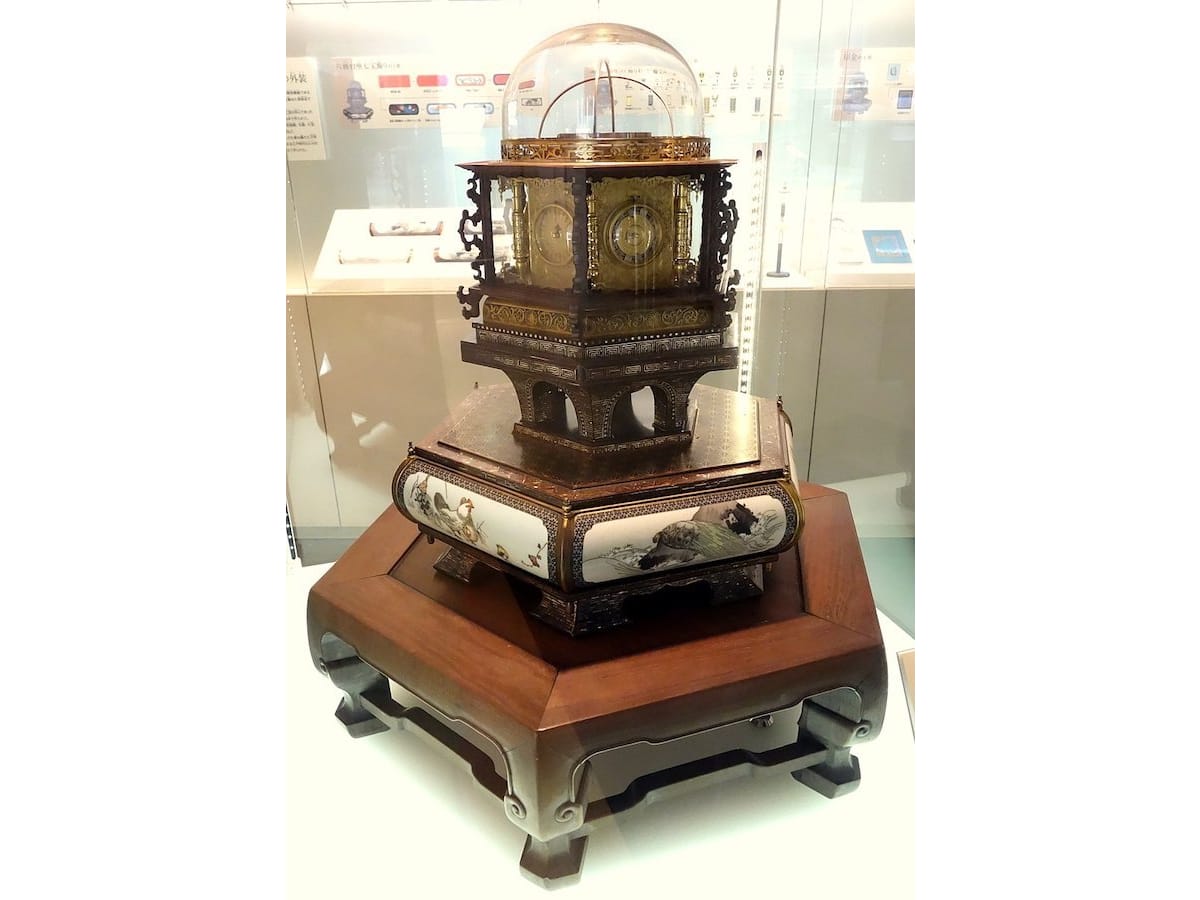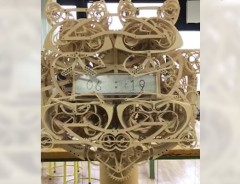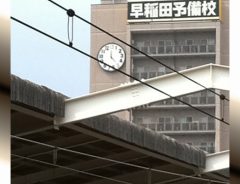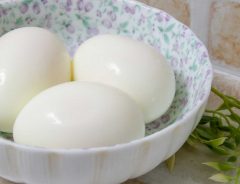
Source: A myriad-year clock, made by Hisashige Tanaka in 1851, with western and Japanese dials, weekly, monthly, and zodiac setting, plus sun and moon, in the National Museum of Nature and Science, Tokyo | Daderot, CC0, via Wikimedia Commons
The wadokei: the old way of measuring time in Japan
- Tags:
- clock / Japanese calendar / Time / wadokei / Western calendar
Related Article
-

70-Year-Old News Footage Reveals How The Japanese Came To Be So Punctual
-

Artist’s embroidered pizza clock tempts you with gooey cheese pendulum action
-

Art Student Made A Clock That Writes The Time As It Elapses
-

Prep School’s Clock Unsettles Passengers With An Eerie Additional 13th Hour
-

From runny to hard, boil your eggs just right with this convenient visual guide


Though less used than the Western calendar, the old Japanese calendar is still used for special occasions like births, deaths, and marriages. A new cycle begins whenever a new Emperor comes to the Chrysanthemum Throne. So, we are currently in Reiwa three and World War II is calculated to have ended in Showa 20.
Less well known is that Japan also used to have its own way of telling the time. Until 1872, when Emperor Meiji did away with the lunar calendar, there were no western-style clocks in Japan. Instead, people used wadokei (和時計 Japanese clocks). A Japanese day only had 12 hours. The length of an hour changed with the seasons, so a daytime hour in winter was sorter than a daytime hour in summer.
These clocks used numbers to tell the time, just like a western-style clock, but in the Edo era, people were more likely to refer to the time using the animals of the Chinese Zodiac, for on old Japanese clocks, each number was associated with an animal. The hour before sunrise was the Hour of the Tiger, dawn was the Hour of the Rabbit, noon was mid-Horse and dusk was the Hour of the Rooster.
The association of numbers with animals goes back to Buddhist mythology. It is said that the Buddha once summoned all the animals of the world to visit him before he left for Nirvana. Only 12 animals bothered to show up - the rat, dragon, monkey, ox, snake, rooster, tiger, horse, rabbit, sheep, dog, and pig. To thank them, the Buddha broke time down into a 12-year cycle and made each animal the guardian of a year. While he was at it, he also gave each of them an hour of the day to look after.
Stupa in the state of Madhya Pradesh, India, showing Buddha being worshipped by the animals. | Biswarup Ganguly, CC BY 3.0, via Wikimedia Commons
Old-style Japanese clocks showed the 12 hours of Edo time and the 12 animals of the Zodiac, but they often showed the phases of the moon, the days of the week, and the 24 Japanese seasons too. Not that most Japanese people had clocks. Instead, they measured the passage of time by the sound of the drum, which was struck to mark the hour at their local temple.
These days, the Japanese pride themselves on their punctuality, and lateness is considered the height of bad manners. But it was not always so. When the British diplomat Ernest Satow first arrived in Edo in 1862, he noted that "neither clocks nor punctuality were common. If you were invited for two o'clock, you most often went at one or three, or perhaps later. In fact, as the Japanese hour altered in length every fortnight, it was difficult to be certain about the time of day, except at sunrise, sunset and midnight."
Officially at least, all that ended in 1872, when Emperor Meiji abolished the old clock and banned temples from sounding the hour on drums. Instead, he brought in western timekeeping and the Gregorian calendar. His subjects were told that the solar calendar was more accurate than the lunar calendar, which required the insertion of an extra month every two or three years to match the solar year. By contrast, the solar calendar only required the insertion of a single day at the end of February every four years.
That was the official explanation, but in truth, the lunar calendar was banned because it was seen as too arbitrary, and therefore connected to ignorance and backwardness, whereas the solar calendar was western, and therefore modern and civilized. From then on, time was told by the sound of the noonday gun, fired from the Imperial Palace.
Arjan Richter, CC by SA 2.0 / © Flickr.com
Reforming something as fundamental as the measurement of time was not a move that went down well on the streets of Tokyo, especially considering the dizzying pace of the changes the new government had introduced since the Meiji Restoration of 1868. There were riots in response to the new way of telling the time, and it was many years before people felt at home with it.
When the British novelist Rudyard Kipling visited Tokyo in 1889, by which time the country had been using the western solar calendar for 17 years, he was surprised to find that most Japanese people still didn't refer to the time very often. "Distances are calculated by the hour in Tokyo," he observed. "Two hours from the Ueno Park brings you to the tomb of the famous Forty-Seven [Ronin], passing on the way the very splendid temples of Shiba, which are all fully described in the guidebooks."
These days, the only place where the hour is still rung out in the old way is Kan'ei-ji 寛永寺, the old temple of the Tokugawa shoguns in Ueno. While the lunar calendar is officially abolished, it is still used for some religious ceremonies.
Perhaps something like the sound of the temple drum can be detected, however remotely, in the chime that rings out over Tokyo every day at 5 pm. It is based on a song called 'Yūyake Koyake' (夕焼小焼け 'Sunrise and Sunset') and is used to mark the end of the school day, when children can go home.
The words are a reminder of an older, more poetic attitude to time. They go: "With sunset, the day darkens/ On the mountain, the bell of time sounds/ Hand in hand, shall we go home, along with the crows?/ Once the children are back, a great full moon shines/ In the dreams of the birds, a sky of sparkling stars."
Quote from "The Bells of Old Tokyo: Travels in Japanese Time," Anna Sherman, Picador 2019, p. 259, 296